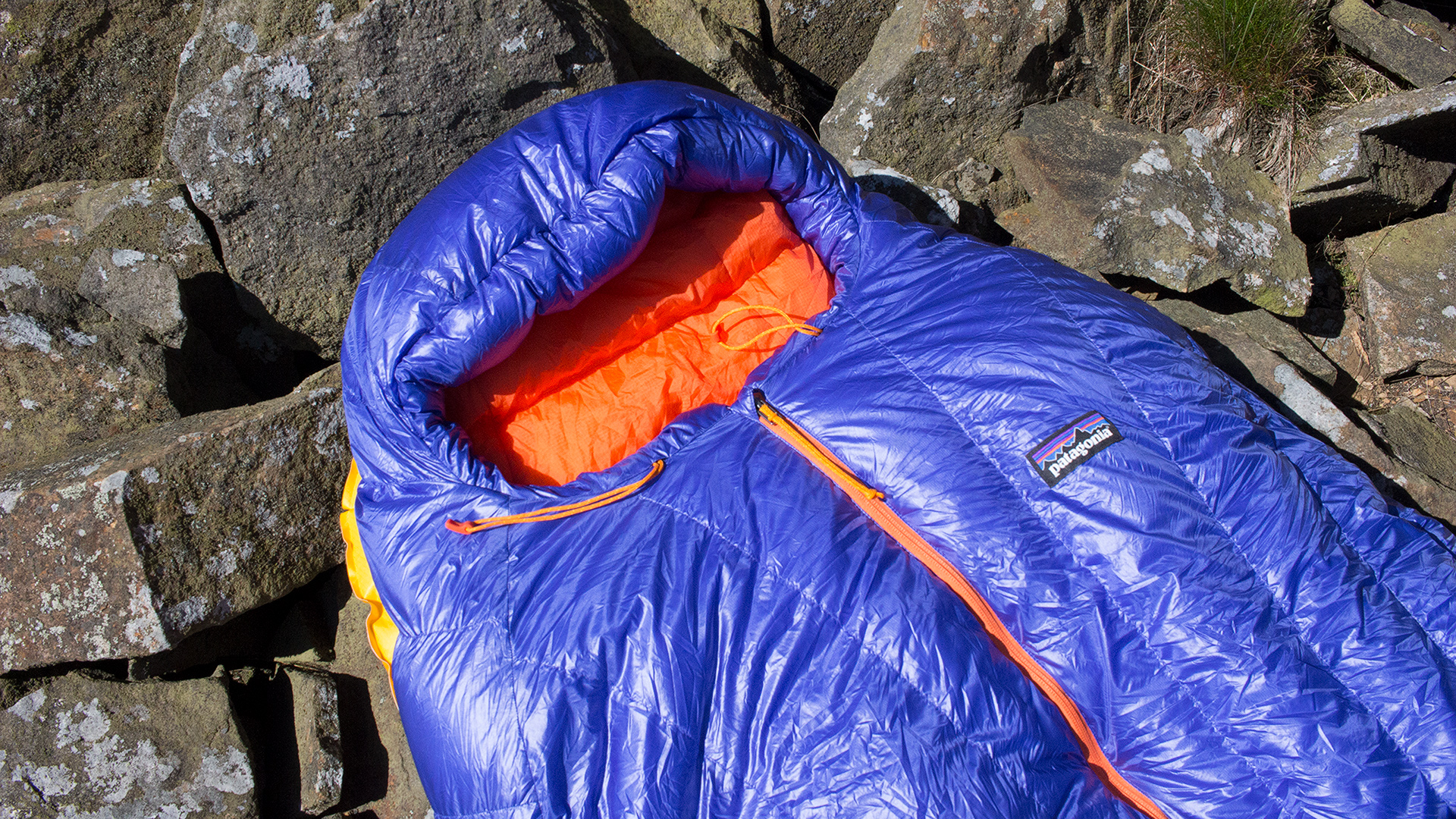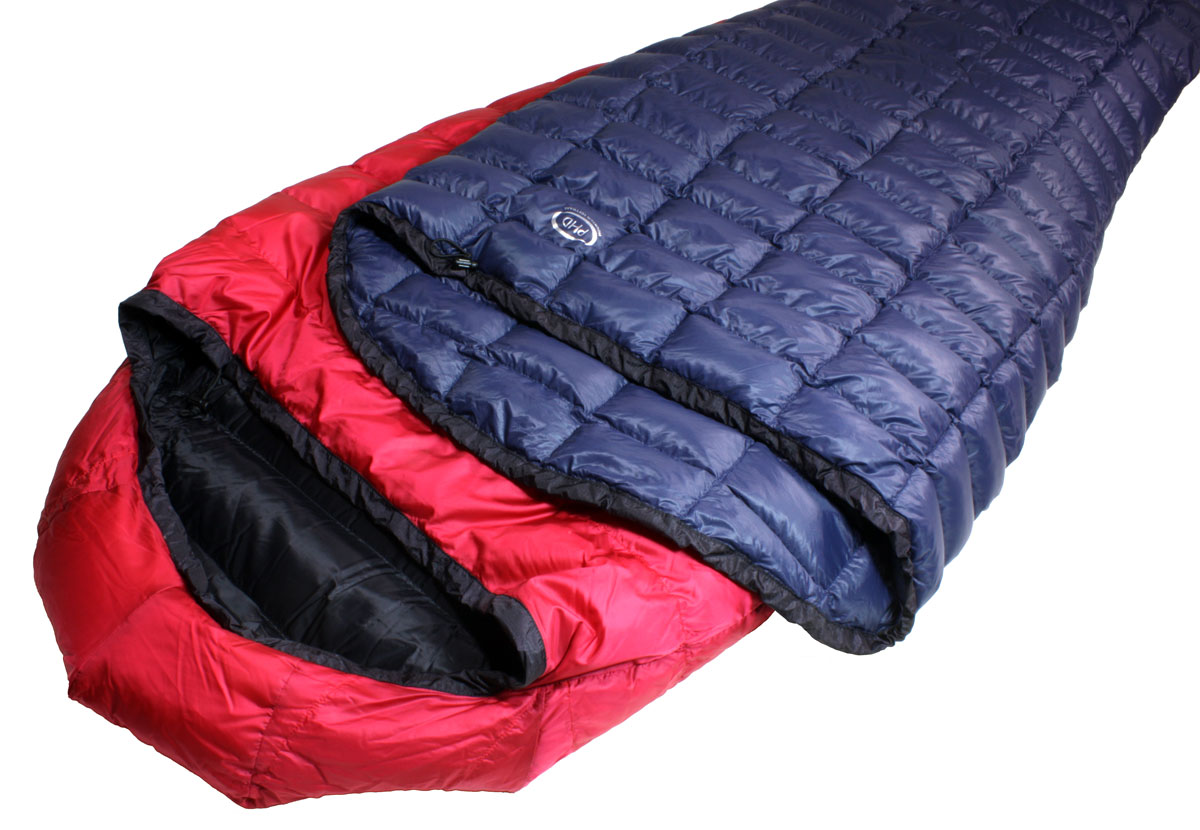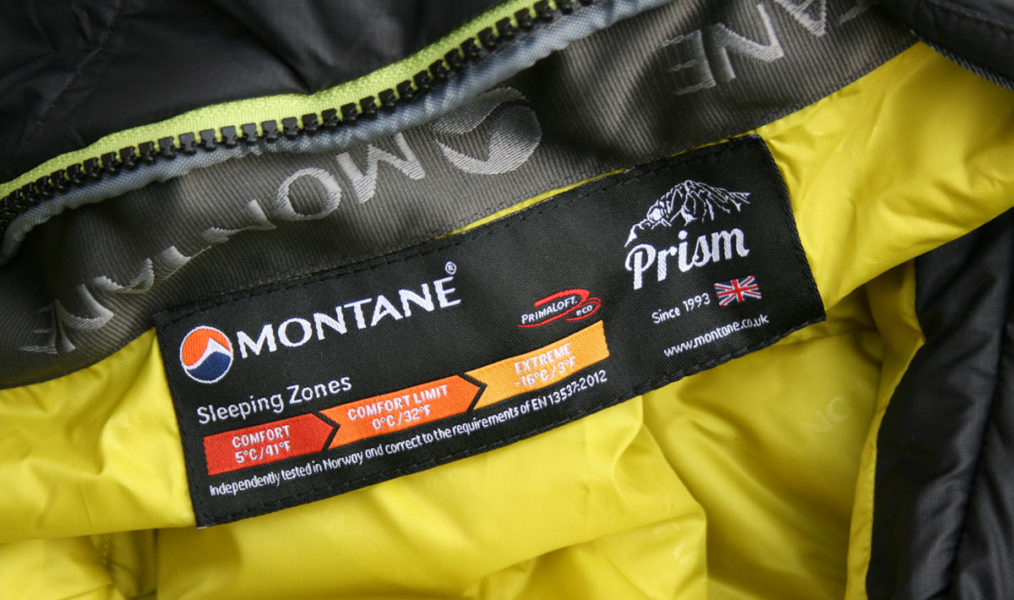Here’s the thing. No-one ever really regretted a sleeping bag that was slightly too warm, but there’s nothing more miserable than shivering all night in a bag that’s simply not warm enough. My first rule of sleeping bags: If in doubt, go for the slightly warmer option – it’s better to carry a few hundred grammes of extra weight than spend every night on the verge of hypothermia.
Sleeping Bag Ratings
Pretty much every sleeping bag you can buy with the odd exception – PH Designs quote a ‘minimum temperature’ for example – come with three temperature ratings. They get slightly different names, but ‘Comfort’, ‘Limit of Comfort’ and ‘Extreme’ are what they generally go by in English. What does it mean? The ratings are based on a standard test protocol – EN 13537 if you’re interested – where a heated test mannequin is put in the sleeping bag, on an insulated pad, in a cold chamber. The lab then measures how much heat is being lost, or rather how much is needed to maintain standard skin temperature at different points on the mannequin’s surface. Here’s what the three readings theoretically mean:
Comfort: is the temperature at which a standard issue woman would sleep for eight hours.
Limit of Comfort: is the temperature at which a standard issue man would sleep for eight hours.
Extreme: Is the level at which the sleeping bag would just about keep you alive. You might get frostbite, be on the verge of hypothermia and so on, but you’d still just about have a pulse.
Bottom Line: You are not a heated mannequin, but it’s a start

Stuff that confuses that…
All of which sounds pretty simple, except that there are other things that aren’t reflected in the test. For one, the mannequin doesn’t move about, create cold spots by, say, jamming a knee against the side of the bag. Or allow warm air to escape from a poorly fitting neck baffle. If you don’t use a mat which is a warm as the insulated mat used in the test, you won’t be as warm. The mannequin ‘sleeps’ on its back, so if you’re a side-sleeper and this exposes different, less insulated areas of the bag, it may not be as warm as in the test. The new Deuter Exosphere we’ve just reviewed has equalised insulation top and bottom to avoid this.
It’s also a fixed shape, so with slim-fitting bags, the mannequin may compress the insulation and stop it working as well, so in real life, if you fit the bag well, it may actually perform better than in the test. It’s also possible for brands to test one bag from a range in the lab and then extrapolate from that to rate its other bags with the same construction. That may not be entirely accurate. Finally, by accident or design, a brand may produce a sleeping bag that’s optimised to work well in the lab test, but doesn’t function as effectively in real life.
Bottom Line: Lab tests have limitations, who knew?
Hello humidity…
One biggy that’s often overlooked is the difference that air humidity makes to insulation. Sleeping bags are simply creating a barrier of heated air between you and the outside world. Dry air is a pretty good thermal barrier, but the higher its humidity, the more efficiently it transmits heat. The end result – and don’t ask how I know – is that a sleeping bag that’s warm and cosy at -15˚C in the cold, dry conditions of the Andes, can feel barely adequate at -10˚C in damp, cold, Scottish winter conditions. It can even make a difference at a local level. Camp on the shores of a lake or a river and the increased humidity will effectively reduce the efficiency of your sleeping bag. Ditto if your bag gets progressively damp through not being properly dried out between use on multi-day trips.
Bottom Line: Upgrade for cold, damp conditions.
People vary
Something else that the lab test can’t really take into account is that people’s resting metabolism varies. Most of us have a vague idea of whether we sleep warm or cold – women, as a generalisation tend to sleep cooler, which is reflected in the test.
Bottom Line: If you sleep cool or warm, adjust your bag to taste.
Sleeping bag mechanics and fit
There are other factors that the test doesn’t – or can’t – take into account. One of these is how well the bag fits you. If the bag is overly snug, it’ll compress the insulation and create cold spots. Equally, if it’s too big, your body is having to heat added air-gaps and potentially generate air-currents which can help lose heat – remember, the air within the bag is held stably in place by the down and its shell fabrics. You want a fit which is reasonably close, but not restrictive. For perspective, Mountain Equipment estimates that its elasticated internal fit system, EXL, can be worth 2˚C in added warmth.
Similarly, poorly fitted or used neck baffles or hood or zips can all lose heat. And here’s another oddity, the EN test calls for a stream of air to be directed down onto the sleeping bag, which in turn will mean heat loss for bags with more air permeable fabrics, however in real life, in a tent or hut, this is unlikely to happen. Of these factors, arguably fit is the most important, particularly if you differ markedly from the norm.
Bottom Line: Sleeping bag fit really does matter. Ideally try before buying to make sure it’s not overly loose or tight, too long or too short.

Add a liner or filler bag
To add some extra warmth, you can consider either a purpose-made filler bag – PH Designs is one option here – or a thermal liner. The former work well, provided they fit okay and don’t compress existing insulation. The latter, in my experience aren’t always particularly effective unless they’re of the heavy, bulky fleece variety, in which case you’re arguably better off using spare clothing instead. If you don’t have to carry it around, a pile liner works well in really cold conditions, but you’re arguably best off buying a warm enough bag to start with.
Bottom Line: Layering bags does work, but be careful you don’t compromise fit and efficiency in the process.
Sleep skills
Do what? Yep, believe it or not, you can tweak your outdoor habits to help you sleep better and warmer. One basic to understand here, is that when you first get into a sleeping bag, it feels cool, but the air within the bag is warmed by your body heat. If you go to bed cold, then that process will take longer and you’ll feel colder for longer, but there are ways of improving things:
- Make sure you eat before sleep. Food is the fuel that keeps your internal engine running hot. Making sure you’re well fed is a basic.
- Similarly, if you wake during the night feeling cold, wolfing down a chocolate bar or similar may help warm you up.
- If you’ve spent an evening sitting about doing nothing, your metabolism will naturally slow down. To warm things up, try doing some press-ups, or star-jumps or a short jog – choose the one most suitable for your surroundings – to warm things up just before you go to bed. You don’t want to be hot and sweaty, just working hard enough to kick-start the down-warming process.
- Stay warm before you go to bed – wear warm stuff during the evening. Keep your hat on. Consider cooking while lying in your sleeping bag, but wearing a warm jacket. You’ll pre-warm the bag and minimise heat loss.
- Learn how to use your sleeping bag properly. If you don’t use the hood – and yes it can feel claustrophobic – you’ll be losing heat both from your head and probably from the shoulder area as well. A hat is a compromise, but nowhere near as effective as an insulated hood. Or wear both.
- You can wear extra clothing, but I’d start off with baselayers and consider adding a down jacket or fleece if you feel cold after half an hour or so after you’ve warmed the down in the bag itself. BUT make sure anything you wear doesn’t make the bag overly tight and compress the insulation.
- If your feet are cold, consider a hot water bottle – boil up some water, stick it in a Nalgene bottle or similar, do the lid up tightly and stick it inside the bag by your feet. In the morning you have non-frozen water readily accessible too, WIN!

- Not strictly a skill, but make sure you use a suitable insulated sleeping mat. The colder the surface you’re sleeping on, the more protection you need, glacier camping, for example, is properly demanding.
- Air and dry your bag between uses for efficient insulation. Most face fabrics will breathe well enough that simple airing should work, but less breathable or waterproof fabrics may require extra airing and inverting the bag to help it breathe.
- In really cold conditions, with multi-day use, ice crystals can form within the bag’s filling, in this case, some expedition climbers found that hydrophobic down helped to maintain loft.
Bottom Line: Preparing to sleep properly – be warm when you get into the bag – and using your bag as intended can make a big difference.
The bottom, bottom Line
It’s simple and it’s complicated. I’d summarise it like this: sleeping bag ratings are a guide, not the law. Ignore the extreme rating. Take into account how warm or cold you sleep. Think about the temperatures you’re likely to encounter and if on doubt, err on the warm side. Try the bag for fit, particularly if you’re an odd shape – very tall, skinny or large – team it with an appropriate mat. Then, for maximum efficiency, make an effort to go to bed warm and use your bag as effectively as possible.
And if none of that works, gorge yourself on high quality chocolate. It may help warm you up, but even it doesn’t, at least you’ll have the consolation of confectionary, something no heated mannequin in a laboratory has access to.







Comments
Good common sense.
Wearing a hat is a great start and can be removed easily to cool down as you warm up.
A goretex bivi bag adds an extra air layer and if the atmospher is damp, as noted in the article, this will keep your bag dry.
Dwn is best!